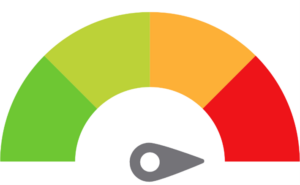04 May 2023 PREDICTING SUCCESS FOR NEARSHORING
Chinese Import Costs Have Risen Dramatically Due to Labor Increases and the Tariffs Imposed During the US - China Trade Dispute.
Written By Jeffrey Cartwright, Shoreview Managing Partner | 7 min read
Companies’ pursuit of success in near-shoring is undeniably complex. Factors such as the unprecedented disruption caused by COVID-19 on supply chains, as well Russia’s military aggression towards Ukraine and China’s threats to forcefully occupy Taiwan, have exacerbated this complexity—looming security risks are now driving a need for diversifying sourcing away from East Asia (including Taiwan, China, Vietnam, South Korea, and Japan). But what constitutes successful near-shoring? The answer lies within each organization, yet it remains clear that mitigating risk involved with East Asian shipments is paramount.
Near-shoring Success Defined
The ultimate definition of success in near-shoring would be when the same product that was originally produced in China, was manufactured in Mexico, and landed at the U.S. distribution center at a lower cost than today. This should be the fully landed cost, including product, transportation, duties, tariffs, and overhead. Additional costs, such as storage of smaller inventories in warehouses due to shorter lead times, should also be included, as well as the interest cost of working capital. For many companies, this success is also measured by expending minimum effort, such as only attending a trade show or submitting a Request for Quotation (RFQ) and expecting the above results without additional investment in time or in supplier development. The likelihood of the above success without re-sourcing, dedicated internal resources, and an investment in financial resources and time is nearly zero.
The reason for near-shoring is to minimize the risk of supply chain disruptions (due to pandemics or armed conflict over Taiwan, for example), which might result in the absence of key raw materials or components from global supply chains – or even the potential of all commercial ocean vessels remaining in port.
The Rationale for Near-shoring Provides Differing Criteria for Success
There are several rationales for Near-Shoring:
- “Secure Trade” This rationale is based upon the need to manufacture in countries that are allies as opposed to strategic rivals. This takes into consideration items that would seriously endanger national security or national existence by allowing military rivals to either pirate or restrict the flow of such products, such as key raw materials and components (rare earth metals, high-end semiconductors and microchips, pharmaceutical ingredients). Success is measured in the secure sourcing of products with Allies (or the U.S.) and not economically.
- “Friend-Shoring” This rationale takes into consideration the sourcing of products from friendly countries, such that the economic benefits of sourcing will strengthen trading alliances. To these countries, the U.S. provides secure market access and vice versa. In this case, the product(s) may not be strategic in a military sense, but they are in terms of supporting democracies and other countries with similar values, such as an absence of slave or child labor, reduction in greenhouse gas emissions, respect of the rights of women and minorities, etc. Success is measured over the long term by the achievement of these social or environmental goals. It is understood and accepted that there is likely to be an increase in cost, at least until productivity or technology offsets the lower productivity or higher wage costs of these countries.
- De-Risking the Flow of Goods In this rationale, companies have become frustrated by the major disruptions of the last few years. The Russian invasion of Ukraine challenged the stability of supply chains further. Add to that the other global challenges (or potential challenges) and many companies are interested in avoiding ocean shipping across the Pacific Ocean. An armed conflict would shut down all shipping to and from East Asia for months or more. These shipping lanes would cease to exist, and there would then be an urgent scramble to find factories in North America. However, the first claimants of the capacity of these factories would be the U.S. and Allied militaries. Some companies would simply cease to have any significant source of products. In this case, near-shoring success would be defined as a stable source of continued product.
Companies should expect that the cost of these products would be dependent upon whether China heavily subsidizes manufacturing. Products made primarily from steel or aluminum and with low labor content are likely to be more costly in Mexico. Products that are high in labor content and based upon plastic resins are likely to be less costly. Then there is the impact of the Trump or 301 tariffs. Chinese products that incur a 25 percent tariff may be more cost-effective in Mexico. Those Chinese products with zero or 7.5 percent tariffs are likely to be more cost-effective in China. Companies that rely on products that continue to be sourced from China may well go out of business due to a complete shutdown of shipping lanes.
Various Sourcing Strategies Once the Decision Has Been Made to Re-Source Away from China
There are several distinct strategies for sourcing products, each with varying levels of potential success. As we describe these options, we also provide graphic representation of the likelihood of success.
The first involves work at qualifying factories and developing cost structures. The second and third assume that those involved in sourcing are selecting products from well-established capabilities.
First, Strategic Sourcing is the process of identifying the best factories based upon product capabilities and landed cost. It involves exploring various countries and logistics. For example, in the case of furniture in China, this was done decades ago. Once qualified factories have been established, it is just a question of picking and choosing products and asking for minor updates. The difficult work of qualifying factories, establishing pricing parameters, and developing import processes has been completed and is no longer a consideration. Typically, strategic sourcing is accomplished by supply chain professionals and engineers. Subsequent choosing of product from a qualified source does not require the same skill set. This model will require the engagement of a sourcing consulting firm with resources deployed on the ground in Mexico. Note that this is not the typical model for those that are sourcing products in China. Across China there is a plethora of factories that are relatively easy to find and with products ready to sell with minor modifications. While more difficult than the other strategies, it has the highest likelihood of success.

A second strategy for many companies is Electronic Sourcing via the internet or via services like Alibaba, Google, or Thomas.net. Most factories in Mexico have a limited presence on the internet. Virtually none of them will pay for a service to list their factories so services like Thomas.net are non-existent for Mexico. Additionally, websites tend to be focused on factory capabilities and are not product focused in that they do not list products that might be available for purchase. Then there is the Mexican business culture, which being based upon established trust, means that if contacted electronically via a Request for Quotation (RFQ), they will overwhelmingly not respond or if they do, the price will be extraordinarily high and the products will not be competitive with sourcing from China. The likelihood of success via an electronic sourcing process is very close to nil.

A third strategy for some companies is ordinary Sourcing. This strategy is different. It is based upon many factories being available and the objective is to locate the factory based upon attending trade shows or traveling on trade missions. In this case, the product has been designed and decided in advance and finding an existing source willing to manufacture this product at a competitive price is the objective. This is the simplest form of sourcing as it is a search among existing alternatives and is somewhat like selecting from a catalogue.

A fourth strategy is Counter Sourcing. This is based largely on attending trade shows or visiting showrooms. For this strategy, matching product designs on display and modifying them to meet anticipated consumer tastes is a driving factor. Little attempt is made at understanding the manufacturing or the logistics involved. Import costs were essentially thought of as being free and reliable. The focus is entirely on the aesthetics and assumed desire for the products selected.

The third and fourth strategies have a probability of success, if and only if there is a sufficient, existing, established supply base of factories. The prospects for success in Mexico are limited. The second strategy is limited by culture in that Mexico is a very social business culture that is based upon face-to-face interactions and trust dependent upon personal relationships. The third strategy prospect for success is even lower as it is dependent upon Mexican companies developing products and showrooms on their own. Mexico is far more of a make-to-order business culture than a culture that develops a wide product offering which waits for a customer to choose from that offering.
Maximizing the Possibility of Successful Re-Sourcing
There is a compelling case to change strategy from a China Only strategy to re-shoring or near-shoring. Given that global economics have changed, there may be an opportunity to lower costs. Being closer to the U.S. market also results in shorter supply chains, which require less inventory investment and enhances the ability to respond faster to changes in demand.
Re-sourcing from China to another country involves great effort, and there are difficulties to overcome. Re-sourcing to a Southeast Asian country like Vietnam or Thailand is relatively easy as the Chinese culture extends into those countries and oftentimes, the factory in China will facilitate the change. The existing culture within the company should be successful in implementing such a change as it does not threaten the cultural patterns which have been established over the years.
However, re-sourcing to the U.S. (re-shoring) or to Mexico (near-shoring) is far more difficult and resource-consuming. Executive leadership will need to be more intimately involved to ensure that the change effort is appropriately staffed with those favorable to the potential of change rather than the existing managers and leaders, who may resist because it will substantially change their roles, activities, or status within the company. Since it also requires far more effort, it may be necessary to add additional resources either internally and /or externally to accomplish the tasks required. If external resources are required, then the executive leadership should be diligent in selecting a consulting resource that has a demonstrated track record of results and hands-on experience with resources on the ground in the target country. Shoreview Management Advisors is such an advisor for Mexico.

